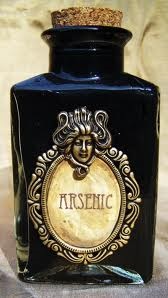Creators Syndicate
By now you have no doubt read or heard news reports about the class-action lawsuit filed in Los Angeles Thursday alleging unsafe levels of arsenic in some California wines. The lawsuit calls for a recall of the wines in question and testing to ensure purity. On the surface this sounds reasonable.
Arsenic, a toxic metal found in the ground, has been called the “king of poisons and the poison of kings.” It can kill. It can cause cancer. Yet there is more to the story, and the lawsuit, than meets the eye.
 It is common for trace elements of arsenic to be present in food products. There is arsenic in your water, the vegetables you eat (whether organically farmed or not) and the fruits and fruit juices you consume. And, yes, there are traces of arsenic in wine.
It is common for trace elements of arsenic to be present in food products. There is arsenic in your water, the vegetables you eat (whether organically farmed or not) and the fruits and fruit juices you consume. And, yes, there are traces of arsenic in wine.
“Virtually anything that has to be watered to grow has some level of arsenic,” said winemaker David Stevens, a winemaking consultant with Napa-based Davon International.
The U.S. Environmental Protection Agency (EPA) is well aware of the presence of arsenic in food products and the risks involved, but issues guidelines on just a few, including water. The limit on trace elements of arsenic in water is 10 parts per billion (ppb). There is no guideline for wine.
The lawsuit bases its allegations on the EPA standard used for water. Therein lies the rub. Water is not wine. The recommended water intake for an adult is 3 liters daily.
The lawsuit alleges researcher Kevin Hicks, who owns a laboratory called BeverageGrades, tested about 1300 wines and that 80-plus had as much as five times the legal limit of arsenic permitted in water. Wine industry experts challenge that comparison on a number of levels, not least of which is the unlikely possibility anyone consumes 3 liters of wine daily.
What’s more, the alleged dangerously high levels of arsenic found in the wines named in the lawsuit are far below the international norms. Canada, the European Union and Japan have regulations that permit the presence of arsenic at 100 to 1000 ppb.
If those levels were deemed dangerous, you would never eat another serving of mussels. A typical bowl of mussels has an arsenic level of 1000 ppb. Apple and pear juice also have significantly higher levels of arsenic measured as ppb than wine.
So that begs the question, why was this lawsuit filed in the first place?
It turns out BeverageGrades sells a service to test wines for purity. The Wine Spectator, a consumer publication, reports that the day the lawsuit was filed BeverageGrades sent a press release to a number of wine retailers offering “a screening and certification model that allows them to assure their customers of the purity of all the alcoholic beverages they sell.”
Now that could be a coincidence, or not. Adding to the intrigue as to why, the wines targeted in the lawsuit tend to be lower-priced but high-volume wines owned by big companies – Bronco, Trinchero, The Wine Group, Treasury Wine Estates – with deep pockets. Now that could be a coincidence, or not.
Taking everything into account, including the international norms, it seems as though the allegation of dangerously higher levels (ppb) of arsenic in these wines is greatly exaggerated. The whole thing has the whiff of a scam.
It makes me think about the millions of Americans who enjoy a glass or two of inexpensive wine as they relax at home after a hard day at work, and how many of them are now uncomfortable with that guilty pleasure (judging by the comments on I’ve seen on social media) and not sure their wine habit is safe.
If it turns out the legal action is a scare tactic being used to gin up revenue for BeverageGrades and the complicit law firm, tar and feathers would be too good.
Want to comment on this post, or anything on WineReviewOnline.com?
Connect with us on Twitter: @WineReviewOnlin.
Robert Whitley is @WineGuru.
8
